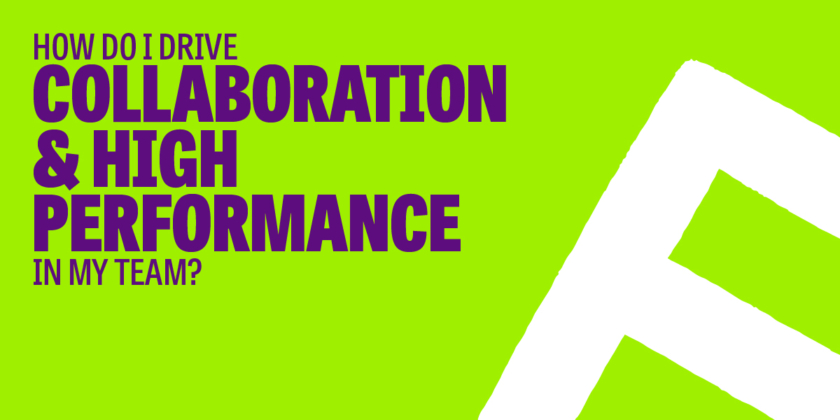Let’s Talk Talent shows you how everyone can play their part in creating collaborative, high-performance teams that delivers results
Most of us have joined teams at various stages of their evolution, with varying levels of productivity. From new and exciting project squads trying to find their feet to established bands of misfits that somewhat make it work, it can be hard to pinpoint what makes a successful team pull together whilst others just never quite get there. There are plenty of theories around, each stating the stages teams need to go through and the behaviours to display in order to create the kind of environment that generates innovative results. All of which are great tools to use, of course.
But at Let’s Talk Talent, we like to make sure things are as clear and transparent as possible. So before we go into the details of how to take teams from forming to performing, we thought we should take a step back and ensure this journey starts at the very beginning, with a level playing field. And that beginning is a common understanding from all involved, including individual team members, managers and the organisation itself, that like in many other areas, there is no ‘I’ in ‘team’.
In short, the first step in making sure you are generating collaborative units is to ensure everyone is clear on the role they have to play in achieving a purpose greater than their own individual performance. We thought about using the usual sports team analogy here, with the manager leading the team to success. But really, organisations are much more complex ecosystems, with several layers, added depth and many more interacting stakeholders.
So below is the Let’s Talk Talent take on how to generate the kind of teamwork that brings employee engagement, drives motivation and sparks innovation. In a concrete, implementable kind of way, of course.
The team members’ role
You’re probably wondering why we didn’t start this blog with the manager’s role. After all, it can be quite easy to put the blame for dysfunctional units on their immediate leader. But at Let’s Talk Talent, we strongly believe that each individual member is accountable for the collective team dynamic. Teams cannot function effectively if people are focused solely on their own performance. The wellbeing of the team has to be prioritised by each member in order for goals to be achieved. Which can only be done by creating and maintaining a collaborative environment that puts trust at its very core. But trust doesn’t just happen overnight. It is everyone’s responsibility to cultivate it.
This is why each team member needs to get to know themselves, their colleagues and the purpose of the team well. By understanding each other’s attributes and motivations a bit better, both colleagues and managers will be in a position to tailor their approach in a way which generates a climate of cooperation. It’s all about finding out what makes each other tick, respecting each other’s boundaries and optimising everyone’s contribution to the team based on their particular skills and drivers.
There are plenty of tools and techniques to help you achieve this, from DISC profiles to strength mapping. Watch out for our next blog on which tools are our favourite ones for a list of our top models to use as part of a team development exercise.
The manager’s role in high performing teams
Let’s be honest, the above prioritisation of team objectives over individual performance goals will not just happen magically. This is where the manager comes in. Team leaders are key in facilitating this evolution by setting the rules of engagement from the get-go. They will be responsible for enabling team development in the following ways:
Setting the example for a collaborative model
Simon Sinek, in his book ‘Why leaders eat last’, describes how army officers eat last in the mess hall.
Why is this relevant? Because it’s all about giving other members of the crew the absolute certainty that their leaders have their backs in any situation, big or small. Great leaders make their teams feel safe. Trust and collaboration are necessary ingredients for team development, but they do not appear under instruction. These particular attributes need to be carefully encouraged by constantly demonstrating the kind of behaviours that will reinforce the feeling of operating within a safe and inclusive space. Psychological safety has often been proven to be a key factor of performance within teams.
Google’s Re:Work study has demonstrated that teams with high levels of psychological safety performed better than others exhibiting lower levels. In order for collaboration and innovation to happen, individuals need to feel safe to express their views, share ideas and admit mistakes without fear of being reprimanded, or even laughed at.
Managers can generate and develop this kind of environment by demonstrating and role-modeling those behaviours themselves. Initiatives such as requesting feedback on their performance or the team’s, acknowledging mistakes, asking questions often and moderating conversations to ensure a climate of mutual respect will lead to everyone being able to bring their whole selves to work, without fear.
Setting the team’s purpose
Understanding your team’s main goals and its mission will ensure everyone moves together in the same direction, as a unit. Pro tip: try to sum up your team’s purpose in six words or less. If you can’t, your purpose needs to be refined further. Understanding why you’re doing what you’re doing is essential in order to generate a clear commitment from all involved.
Setting the rules of engagement
You’ve probably heard it before, but we like to compare managerial staff to orchestra conductors. They are expertly coordinating the overall result, but each member of the orchestra is still very much responsible for playing their part. Generating a harmonious team dynamic works in the same way.
Individuals are still held accountable for their own role in reaching overall team objectives, but a little support may be needed from time to time. Whether this is done by facilitating communications, setting clear ways of working or defining clear roles and responsibilities, managers are a key component of the process.
Celebrating successes
This part is often overlooked, but going back and acknowledging what has been accomplished is an important step in creating a cohesive team dynamic. When setting your team’s purpose, make sure you create small milestones along the way so you can acknowledge how far you’ve come once you reach them.
Recognition can go a long way towards generating employee satisfaction and overall happier team members.
The organisation’s role in team development
Your organisation has a role to play in team dynamics too. After all, your business is also a team, and needs to function using the same principles. So what can it do to help generate high performance teams? In a nutshell, lead by example. By role-modelling the behaviours that promote teamwork, senior leadership can contribute to building the kind of environment that will foster trust and collaboration and contribute to effective team development.
As we like to say, it all starts at the top. Setting clear values and reinforcing them daily by demonstrating the right behaviours, communicating clearly as well as generating opportunities for cross-departmental collaboration are all ways to bring people together and working towards a common goal.
Our client euNetworks, for example, have implemented the All Hands calls twice a week across the entire company, led by a different team each time. This initiative is a great way of putting the company values into action and focusing on collaboration.
In Conclusion: Effective team development is key to high performing teams
Successful teams generate more results, of course. But the outcome of developing the kind of effective teamwork that comes from cooperation, inclusion and innovation is far greater than just performance itself.
Team development contributes to higher retention rates by increasing employee engagement and creating the kinds of community connections that generate true motivation. Which is a self-fulfilling prophecy in itself, as people who see their contribution valued will feel engaged and committed, putting more into the process. But for this to happen, each team member has to remain firmly focused on the greater team purpose and work together as a unit to achieve it, from your talent pool and managerial staff to your senior leadership team.
And once your people feel safe in the knowledge that you have their backs, they will be able to fully show up and bring their whole selves to work.
If you’d like to know more about how to take your team from its barely-formed debut to a high-performance stage, book a meeting with our team directly.
Or register for our Team Building for Innovation webinar to learn how to generate creative ideas to work for you.

